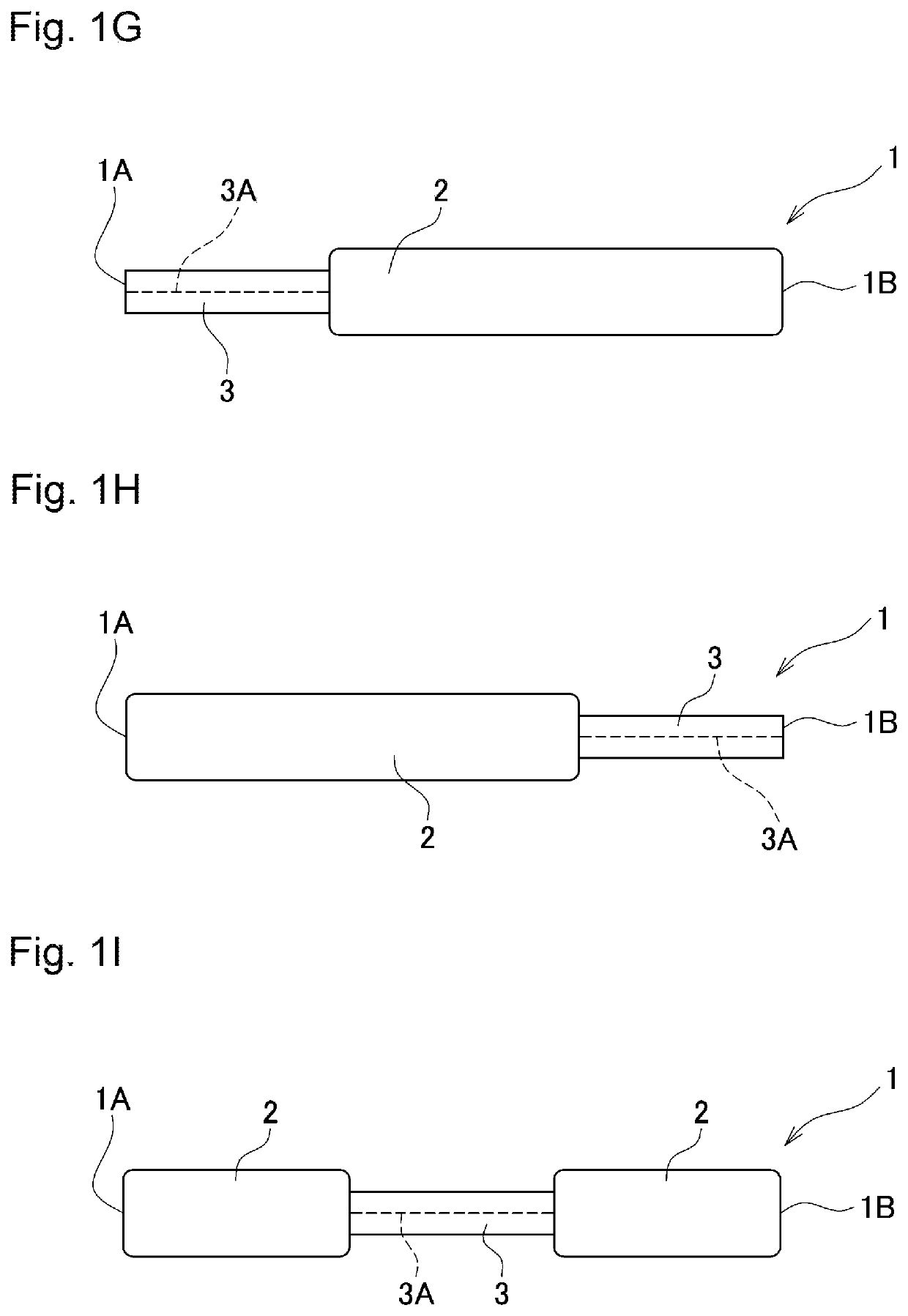Adhesive plaster structure for treating wounds caused by ingrown nails
a technology of ingrown nails and adhesive plaster, which is applied in the field of adhesive plaster structure for treating wounds can solve the problems of increased pain, inflammation accompanying pain or severe pain, and increased pain, so as to relieve the pain of the wound caused by ingrown nails quickly and dramatically, and the effect of effective and efficient treatmen
- Summary
- Abstract
- Description
- Claims
- Application Information
AI Technical Summary
Benefits of technology
Problems solved by technology
Method used
Image
Examples
example 1
[0241]By using the adhesive plaster structure having a shape shown in FIG. 10, the treatment of the wound of the ingrown nail was applied to a female patient of 24-year-old (having the ingrown nail on the big toe of the left foot).
[0242]1. Material and Dimension of Adhesive Plaster Structure
[0243]A hydrogel sheet (“Duoactive ET” (registered trademark) manufactured by ConvaTec Japan (Japan)) (thickness before swelling: 0.7 mm) was used for the material of the wound adhesion area 2 of the adhesive plaster structure, and an ABS resin was used for the material of the guide area 3. Thickness of the guide area 3: 0.5 mm. (The hydrogel sheet used here is not initially swollen and is swollen after applied to the wound by the body fluid exuded from the wound.) For adhering the wound adhesion area 2 and the guide area 3 with each other, Aron Alpha A “Sankyo” (registered trademark) which is an adhesive agent for medical use and manufactured by Toagosei Co., Ltd. (Japan) was used. The size meas...
example 2
[0253]By using the adhesive plaster structure substantially same as that of the example 1, the treatment of the wound of the ingrown nail was applied to a female patient of 20-year-old (having the ingrown nail on the big toe of the left foot) by the same operation as the first treatment date of the example 1.
[0254]Seven days after the treatment date, the inventor observed the toe and confirmed complete healing.
[0255](Details of Healing Process)
[0256]FIG. 19A and FIG. 19B show photographs of the toe before the correction treatment of the treatment date (before attaching the adhesive plaster structure). Severe pain, internal bleeding, inflammation and formation of granuloma were confirmed. There was difficulty in walking.
[0257]FIG. 20A and FIG. 20B show photographs of the toe after the correction treatment of the treatment date (after attaching the adhesive plaster structure). Just after attaching the adhesive plaster structure, pain disappeared and walking was improved.
[0258]FIG. 21A...
example 3
[0260]By using the adhesive plaster structure substantially same as that of the example 1, the treatment of wound of the ingrown nail was applied to a female patient of 27-year-old (having the ingrown nail on the big toe of the left foot) by the same operation as the first treatment date of the example 1. However, since the patient of the example 3 had the wound on both lateral nail edges (lateral edge portions of the nail) of both sides of the big toe of the left foot, two (a pair of) adhesive plaster structures having a linearly symmetric shape (i.e., having a mirror image relationship to each other) were used. The pair of adhesive plaster structures were attached to both sides of the finger / toe one by one, and adhered / fixed to the upper side surface of the nail by an adhesive agent. At that time, the handles 1C of both adhesive plaster structures are overlapped with each other at the upper side surface of the nail and adhered / fixed to each other by an adhesive agent.
[0261]Seven d...
PUM
| Property | Measurement | Unit |
|---|---|---|
| thickness | aaaaa | aaaaa |
| thickness | aaaaa | aaaaa |
| thickness | aaaaa | aaaaa |
Abstract
Description
Claims
Application Information
 Login to View More
Login to View More - R&D
- Intellectual Property
- Life Sciences
- Materials
- Tech Scout
- Unparalleled Data Quality
- Higher Quality Content
- 60% Fewer Hallucinations
Browse by: Latest US Patents, China's latest patents, Technical Efficacy Thesaurus, Application Domain, Technology Topic, Popular Technical Reports.
© 2025 PatSnap. All rights reserved.Legal|Privacy policy|Modern Slavery Act Transparency Statement|Sitemap|About US| Contact US: help@patsnap.com



